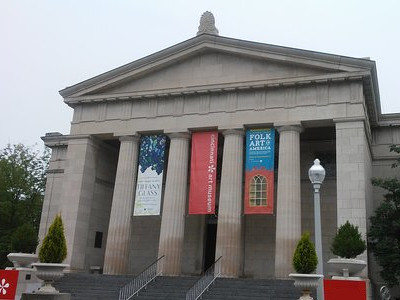Want to Learn More?
Education is one of the primary functions of a museum. Museums gather objects from across the world and display them in exhibits which give many visitors access to objects they would never be able to see otherwise. Furthermore, museums interpret objects for their visitors, meaning that experts explain the history and context of their collections as well as their significance both to the past and the present.
Early “museums” were private collections of art or curiosities owned by wealthy individuals. One of the oldest museums known is Ennigaldi-Nanna’s museum, built by Princess Ennigaldi in modern Iraq at the end of the Neo-Babylonian Empire. The site, dating to c. 530 BCE contained artifacts from earlier Mesopotamian Civilizations. The most notable object found at the site is a clay drum label written in three languages which references the history and discovery of an item in the museum’s collection.
The collectors and naturalists who organized private museums usually did so to display their wealth and the breadth of their travels. They also maintained exclusive control over their collections and did always offer access to the general public. These early collections were “encyclopedic” in nature consuming and collecting as much knowledge as possible, to put everything they collected and everything they knew on display. The Age of Enlightenment in the 18th century saw a shift in museum focus to “organization and taxonomy” rather than displaying everything in any order.
By the late 19th century, natural history museums were the leaders in classifying and interpreting the natural world. They sought to gather examples from all fields of knowledge for research and display purposes. Today, universities have taken over the lead in research, but museums remain the primary venue for the display of cultural and historical artifacts.
Today, the statutes of the International Council of Museums define a museum as “a non-profit, permanent institution in the service of society and its development, open to the public, which acquires, conserves, researches, communicates and exhibits the tangible and intangible heritage of humanity and its environment for the purposes of education, study and enjoyment.”

Museum Basics
Museums are institutions that collect, preserve, interpret and display objects of artistic, cultural, or scientific significance for research, study, and educational purposes. In the broadest sense, the term museum also includes organizations such as archives, libraries, zoos and botanical gardens.

Museum Sciences
It takes professionals from many different fields of science working together to make a museum operate successfully. From archaeologists and ethnographers in the field to conservators and curators behind the scenes, everyone plays their part in preparing museum exhibits.

Humanity
A series of major social and technological advances are what signals when early hominids had become “human.”

Society
A society, or a human society, is a group of people involved with each other through persistent relations, or a large social grouping sharing the same geographical or social territory, typically subject to the same political authority and dominant cultural expectations.

Cultures and Cultural Traits
Culture is an umbrella term which encompasses the social behavior and norms found in human societies, as well as the knowledge, beliefs, arts, laws, customs, capabilities, and habits of the individuals in these groups. Humans acquire culture through the learning processes of enculturation and socialization, which is shown by the diversity of cultures across societies.

Civilizations
A civilization (or civilisation) is a complex society that is characterized by urban development, social stratification, a form of government, and symbolic systems of communication (such as writing). Civilizations are intimately associated with and often have characteristics such as centralization, the domestication of plant and animal species, specialization of labor, culturally-ingrained ideologies of progress and supremacism, monumental architecture, taxation, societal dependence upon farming, and expansionism.
